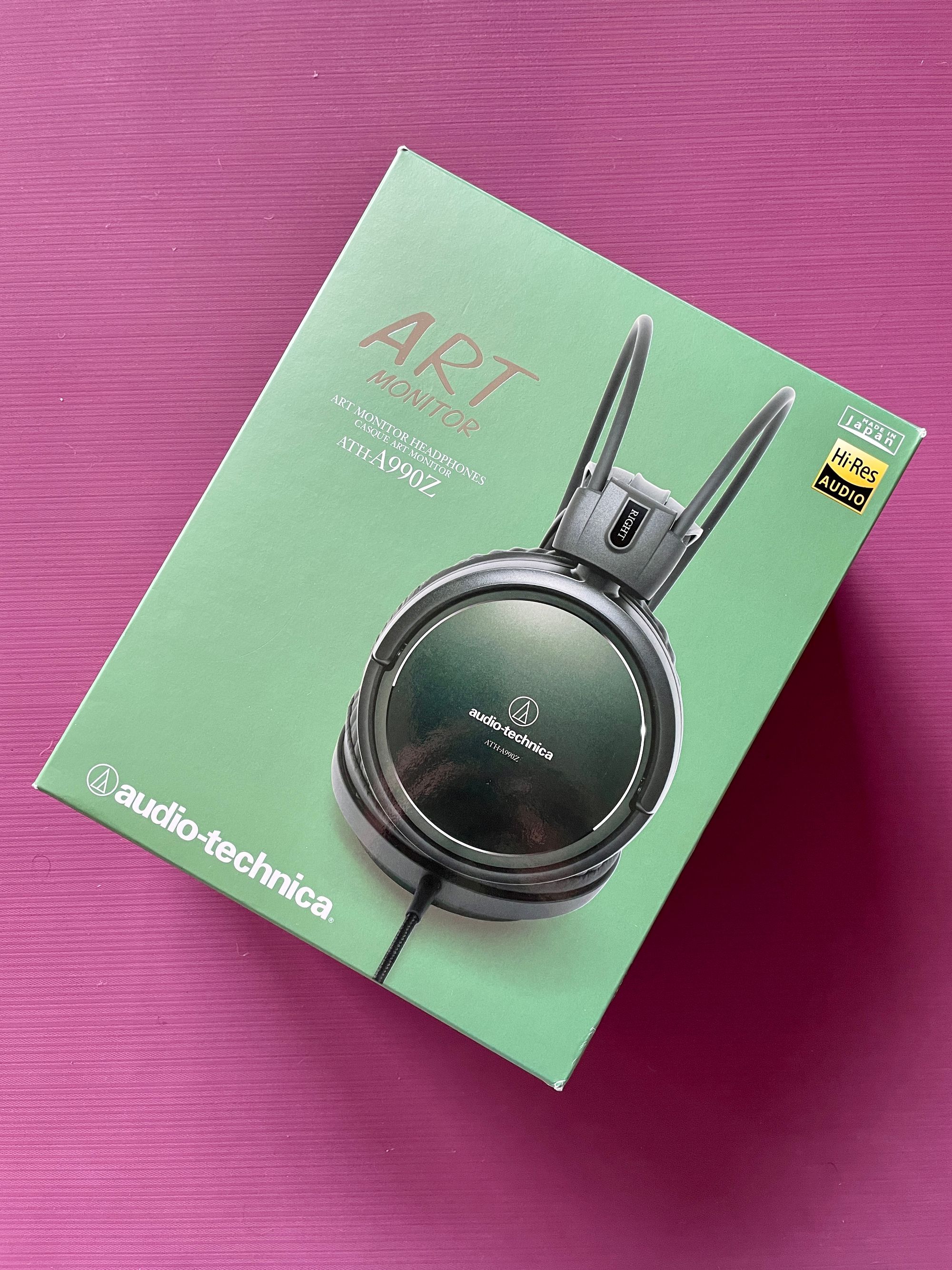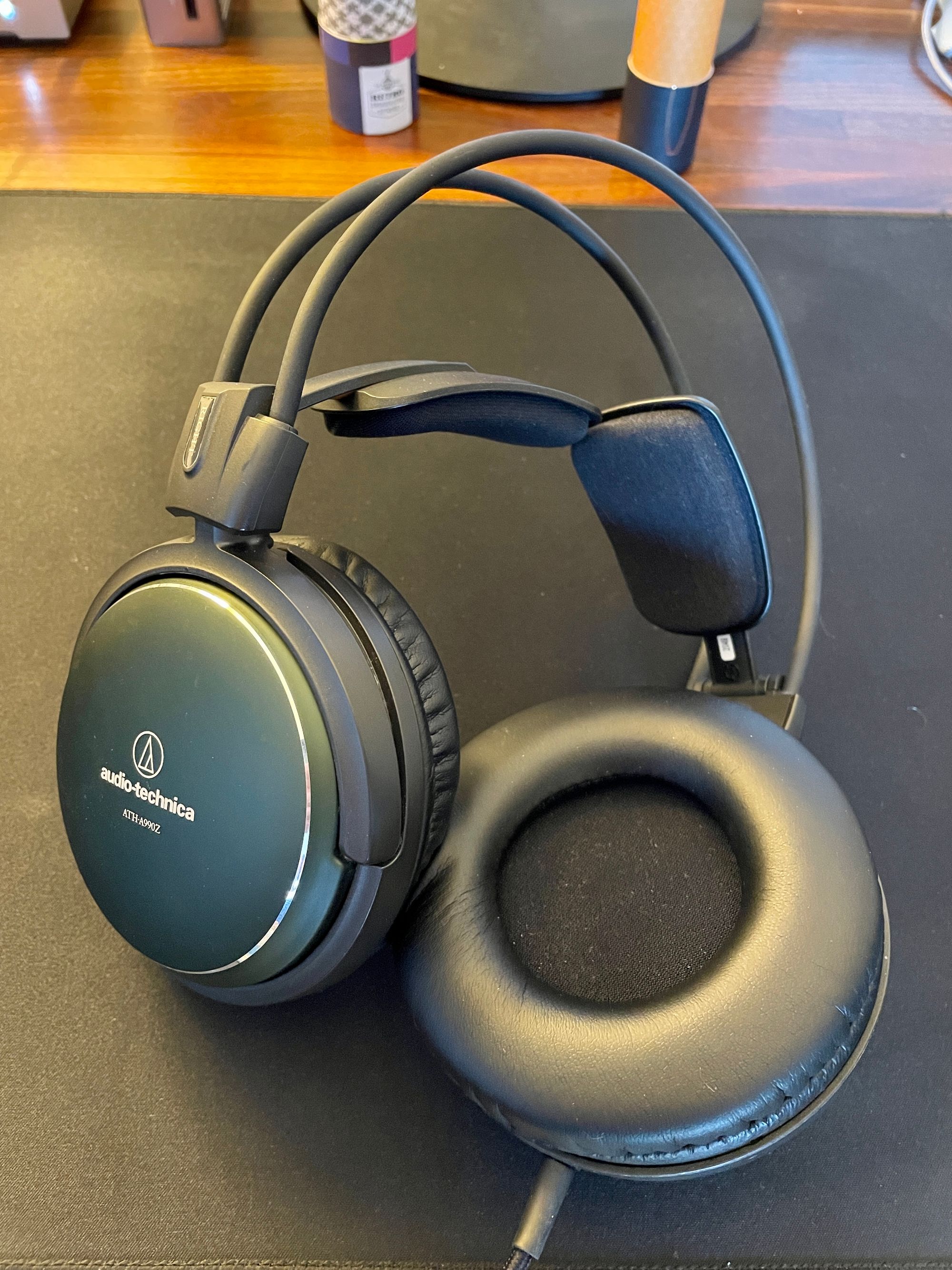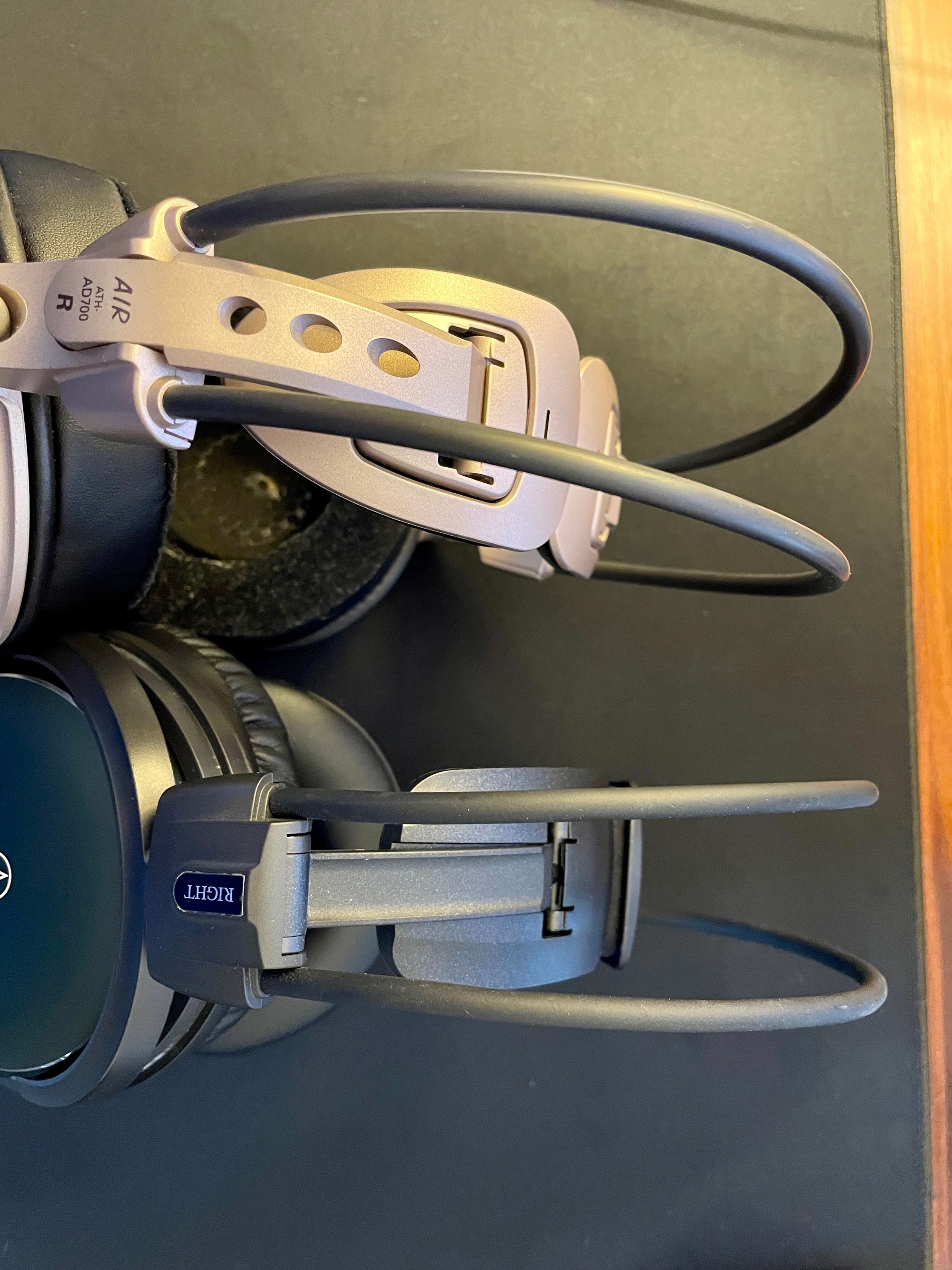I'd like to make this review purely about the headphones in question. Most explanations of jargon will largely be skipped here in an effort to keep the review shorter.
I'm also going to approach this review a bit differently from other reviews of headphones I see on the internet. I don't find those particularly helpful unless you're already deep into the hobby and want to make this review more approachable.
Why?
I,ve never had issues using open-backed headphones in an office because I listen to music at such low volumes. I liked being able to chat with someone without actually taking my headphones off, though I know most people hate the distractions that come from the open-backed experience.
However, during COVID I've been stuck at home right next to a construction site. This is, as you can imagine, extremely annoying. At the time I only had open-backed headphones and IEMs, but the IEM cable wasn't quite long enough to comfortably reach my head from the amplifier on my desk, and the cable caused enough microphonics that I didn't want to use an extender. I needed closed back headphones or other IEMs.
Because I already had IEMs, I had no real desire to get another set. I've had issues with active noise canceling headphones in the past making me nauseous and didn't want to risk it. I needed a pair of closed-back headphones.
At the time I was looking (December 2020 - January 2021), there were no reviews with objective measurements for the ATH-A990Z, but there were raving reviews for it's predecessor. I decided to take a chance because I knew I generally like the house sound of Audio Technica, and eventually dropped about $200 to purchase the ATH-A990Z.

First Impressions
Appearance
These are beautiful headphones. The earcups are large and a gorgeous green color. It's both deep green and greyish-green at the same time and I love how it looks. The black plastic really brings out the green, and I love the general Audio Technica ATH-series aesthetic.

Sound
Bad.
The standard track to test a set of audio equipment, as far as I can tell, is Hotel California by the Eagles. It stresses the whole frequency range, from deep bass to sharp highs. Overly bright headphones won't tame some of the aggressive highs off the guitar or tambourine and will sound sharp and almost painful. Headphones without a crisp bass response will sound flat and slow. Anything without a resolving midrange won't provide the impact that the vocals should and will sound lifeless.
Straight out of the box, the ATH-A990Z sounded wrong. Everything sounded like it was coming from the other side of a blanket except the cymbals or the tambourine. Those were attacking the top-back edge of my right ear. It had the worst qualities of both bright and dark headphones.
It was bad enough that I started plugging in all the other headphones in the house. My Etymotic ER3XR IEMs, ATH-AD700 headphones, and Massdrop X Fostex T-XO headphones all sound different from each other, but they at least all provided a consistent tone. Something was wrong with my new headphones.
Burn in
Burn in is a complicated and highly debated subject for headphones. My understanding is that dynamic drivers might sometimes need some burn in time, but it shouldn't generally be necessary. I left my A990Z's playing white noise at a decent volume overnight just in case, fully prepared to return them if they didn't sound different.
They sounded in line with my other headphones the next day. Still a bit strange, but in line.
Sound
These are quintessential "V-shaped" headphones. This means they emphasize the very low and very high frequencies at the cost of the midrange. Bass is a thing most people are familiar with, but treble and midrange is typically harder to identify. Generally the midrange contains things like piano and vocals. A recessed midrange will emphasize drums and bass, which is very good for certain types of music and extremely good for blocking out outside noises. More on that last bit later.

This emphasis is obvious from the shaded graph at the bottom of the frequency response graph, which is an "ideal" target known as the Harman Target Curve. Deviation from this line (generally) causes the sound from a speaker or headphone to sound non-neutral. Again, this is not a bad thing. Plenty of people prefer more bass, just as many people prefer an elevated midrange. There are also certain frequencies that are know to be problematic because of resonances in the human ear canal. Even the most expensive and well-engineered headphones in the world have significant reduction in the frequency response in the 9-10kHz range and another dip around 14kHz.
V-shapedness
I've had some experience with V-shaped and bass-boosted headphones in the past, but these are uniquely boomy to my ears. The bass seems to echo in the earcups or something because it feels loose and... slow. Audio people often refer to bass as fast when they like it and I never quite understood what they meant till I put these on. The bass lingers just a bit longer than you might expect, and so all music felt a touch slow and laid back. It is also not particularly resolving, which is another thing I never quite understood before hearing these.
That being said, I found the amount of bass to be pretty nice. It's not overpowering by any stretch and gives a relaxing vibe to everything I listened to. This is in contrast to some of the other V-shaped headphones I've tried in the past (looking at you, Beyerdynamic) who managed to make the bass overpowering and the treble painful.
And despite my worries about the treble after my first listen, it seemed to mellow out to a reasonable level after burning in the headphones. I've had no issues with the treble response on these headphones.
Are the mids actually recessed?
Looking at the graph, you might expect vocals to take a backstage. But there's something about Audio Technica headphones (at least in the ATH series) that just make vocals shine. They aren't anywhere close to my ATH-AD700s, but they emphasize the vocals much more than my Etymotic ER3XRs. This was a reasonably surprising result once I saw the frequency response graph, but I think some of this plays into the imaging properties of the headphones.
Imaging and Soundstage
I normally associate the ATH series of headphones with excellent imaging and soundstage that's almost too big. Being closed backs, I knew I needed to temper those expectations.
The soundstage is still excellent. I get a great deal of depth to instruments, though drums still sound like they're attaching the backs of my ears. Vocals come to the forefront despite not looking particularly boosted on the frequency response graph.
The problem is imaging. Sounds don't seem to come from anywhere but out to the sides. When listening to songs with panning sounds, the 990Zs create a weird sensation of music moving over you, almost like walking through a tunnel of water in an aquarium and watching the fish swing around you. There's almost no separation front-to-back, and because of this sounds can get jumbled and lost. Even my IEMs, which have nearly 0 soundstage, can track instruments better than the 990Zs.
Comfort and Construction
I have an old pair of Audio Technicas from 2010. The construction has changed quite a bit since then, though the style language has stayed the same.




My impression is that build quality has gone down slightly since I bought my old headphones. While the leather earpads are excellent and a huge highlight, the plastic frame around the headphone has gotten worse.
The headband on my ATH-AD700s is a rubbery material that feels flexible and resilient. The A990Zs feel stiff in comparison and were already creaking a bit after 6 months of use. The plastic wings that rest on your head are comparable in comfort, but the newer black plastic doesn't feel as nice as the old plastic.
Cable
The biggest, and most shocking change, in the build was in the cable. I never knew I could care so much about a cable.
The new cable sucks.
The old cable is currently my favorite headphone cable ever. It's not particularly heavy but is coasted in a substantial, rubbery material. It's flexible but not floppy. Holds its shape but isn't rigid. The AKG Q701 headphones I've tried before had a comparable cable but it held its kinks too easily. Most importantly, I can try to cause microphonics on those cables and they just won't happen. Or, they don't happen in a way I care about.
The new Audio Technica cable (pictured in the gallery above) is wrapped in a cloth-like material, and you can hear every single thing that comes into contact with that cable. It has the perfect texture and stiffness to be influenced by everything. It'll make noise against my shirt as I tilt my shirt. It'll make noise if it taps against my chair.
I don't like the new cable.
Fit
These are big headphones. And because of the headband structure, it either fits you or it doesn't. Plenty of people online will complain about the Audio Technica headbands being too big. I've heard of people bending the arches to make them fit better.
I didn't think I had to worry because I had a previous pair of Audio Technicas. Turns out, they adjusted the headband sizes since 2010 and these just barely fit me. They were so close to not fitting that I stretched them over my speakers at night for more than a month to try to bend out the headband a bit.
There's also the question of the plastic flaps. Some people hate them. I quite like them because the top of head really doesn't like constant contact with anything, though this style of flap does cause seriously bad mohawk-style hair if you wear them too long.
Comfort
These are extremely comfortable, despite not fitting super well. My friends also agree they're super comfortable. The Audio Technica design produces extremely light headphones and the leather earpads and have just the right level of give in the foam.
Isolation
I got these headphones to isolate myself from the construction site next door. And they worked a treat! While playing music I had very little outside noise coming through in any noticeable way, though without music I felt like I could hear everything around me. To me, that's the best of both worlds: the ability to disappear into a veil of sound while still being able to pause the music and have a normal conversation with someone else. I was very impressed with this phenomenon, as were my friends who had a chance to test them out.
Value
Are these worth the $200? I'll say no, but it's really close.
I think an IEM with a sufficiently insulated cable would provide better sound quality and isolation than the ATH-A990Zs, while costing a fair bit less. The Etymotic ER2 line is lauded for it's sound quality at around $100, but comes with a not-so-great cable. If you need over-ear headphones, you can get excellent open-backed headphones for $200 in the HD6XX from Sennheiser and Drop. And for V-shaped closed backs, you can get some pretty good Beyerdynamics for a similar price and better comfort levels.
None of these options are strictly better than the A990Z, but I think they all do one of the components better. And that's really the problem: these aren't headphones that make me want to listen to music like my AD700s. There's just one thing or another that's not quite what I want from a pair of headphones, and I don't think that Audio Technica house sound with forward vocals works on closed backs for me.
So I've decided to part ways with the A990Z. It was a good year, but the construction is done next door and I don't want to manage storage for another set of headphones.

